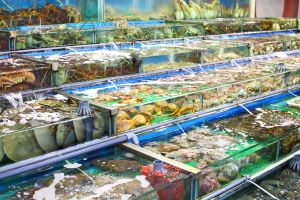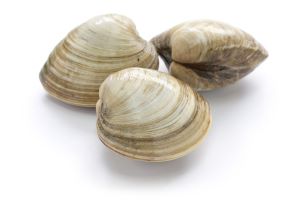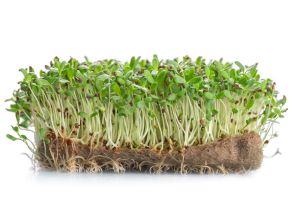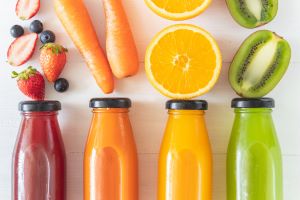Other Specialized Processes
Hazard Analysis Critical Control Point (HACCP) plans may be required for activities such as maintaining shellstock tanks, sprouting seeds, and the production of juice.
Molluscan Shellfish Display Tanks
Molluscan shellfish include clams, oysters, and mussels. Shellfish live on the ocean floor as filter feeders, meaning they strain suspended matter and food particles from the water. This can introduce bacteria or viruses such as Vibrio. Molluscan shellfish are commonly eaten raw or partially cooked. When using a life-support system display tank to store and display shellfish that are offered for human consumption, a HACCP plan and variance are required.
 Some of the common critical control points, or CCPs, within the HACCP plan include testing the water quality and water temperature to ensure the safe storage of live molluscan shellfish.
Some of the common critical control points, or CCPs, within the HACCP plan include testing the water quality and water temperature to ensure the safe storage of live molluscan shellfish.
The HACCP requirements for molluscan shellfish do not include lobsters, crabs, or snails.
The MDA provides consultative guidance to operators to assist in building their HACCP plans. For assistance with developing a HACCP plan contact the HACCP and Variance Review Department at MDA.HACCP.Variance@state.mn.us.
Sprouting Seeds
Sprouts may include alfalfa, clover, sunflower, broccoli, mustard, and radish as well as mung, kidney, navy, and soybeans. Raw or lightly cooked sprouts have been associated with numerous foodborne illness outbreaks. Microorganisms, such as Escherichia coli O157 and Salmonella can be on the seeds or introduced during the sprouting process. If present, they can continue to grow quickly when given the ideal growing conditions that are necessary to germinate the seeds. Due to these increased risks, a HACCP plan is required to mitigate the associated hazards.
Common critical control points or CCPS include a sanitizing solution applied to the seeds prior to sprouting as well as laboratory testing the irrigation wastewater to verify the seed chlorination methods.
The HACCP requirements for sprouting seeds do not include wheat grass or microgreens.
The MDA provides consultative guidance to operators to assist in building their HACCP plans. For assistance with developing a HACCP plan contact the HACCP and Variance Review Department at MDA.HACCP.Variance@state.mn.us.
 Juice Production
Juice Production
Producing juice is not identified as a specialized process in the Minnesota Food Code, but does require a HACCP plan under specific circumstances:
- Producing unpackaged juice on premises for highly susceptible populations.
- Packaging juice in the food establishment, unless the label states:
"WARNING: This product has not been pasteurized and, therefore, may contain harmful bacteria that can cause serious illness in children, the elderly, and persons with weakened immune systems."
If not labeled accordingly per Minnesota Rules, the juice must be treated to yield a 5-log reduction of the most resistant microorganism of public health significance. Common methods to achieve this pathogen reduction include heat or UV light.
The labeling exemption is only for juice that is sold at retail, or directly to the end consumer. If juice is wholesaled it may be subject to Juice HACCP Regulation under 21 CFR 120. The FDA has a guidance document to help answer questions on this topic to determine when this regulation may apply.
The MDA provides consultative guidance to operators to assist in building their retail HACCP plans. For assistance with developing a HACCP plan contact the HACCP and Variance Review Department at MDA.HACCP.Variance@state.mn.us.

